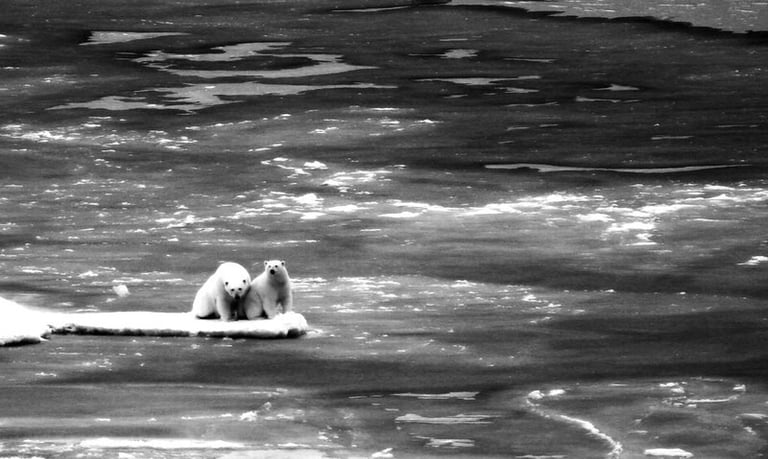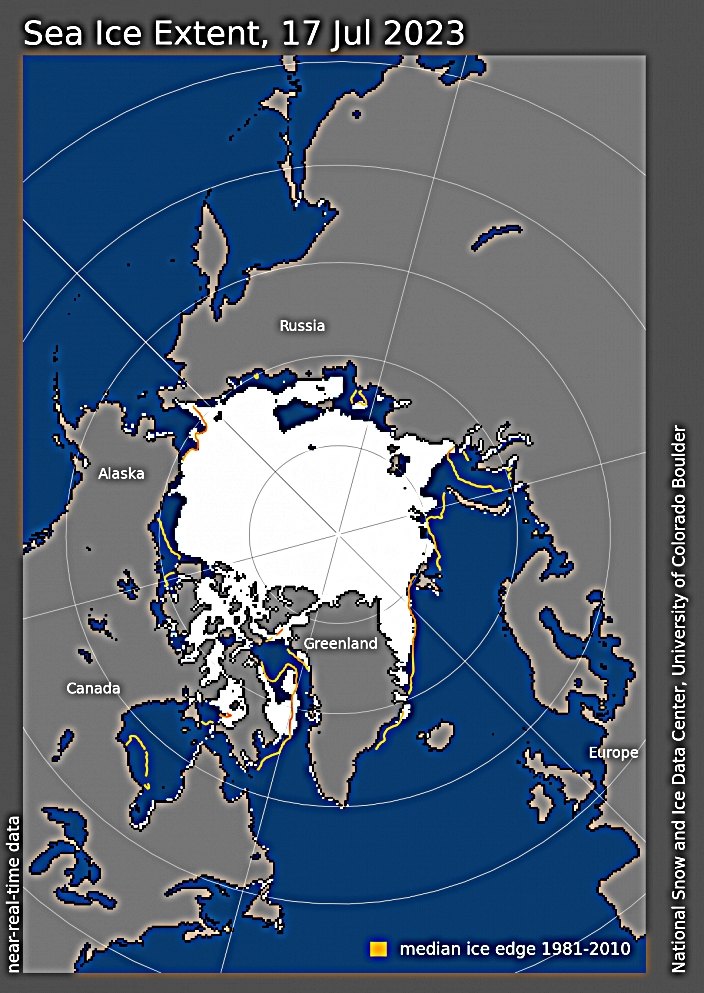CLIMATE CHANGE: THE MELTING OF THE ARCTIC ICE CAP - ITS IMPACT
IMPACT OF MELTING NORTH [ARCTIC] AND SOUTH [ANTARTICA] POLAR ICE CAPS DUE TO CLIMATE CHANGE. LIFE AS WE KNOW WILL NOT BE THE SAME
CULTURE&LIFE


Effect of Climate Change.
A recent study disclosed that the North Pole ICECAP, known as ARTIC, may be gone by the early 2030s.
"Surviving in the Arctic" by U.S. Geological Survey is marked with CC0 1.0. To view the terms, visit https://creativecommons.org/publicdomain/zero/1.0/?ref=openverse.
Climate Change Primary & Secondary Impacts
More often than not, the impact of Climate Change is mainly focused on rising sea levels and generally does not extend beyond. This article is the result of studies of various papers and the extent to which the danger the melting of ice caps poses to humanity. And, if we want to blame, we should know it solely rests on us, our species.
Without, delving into the reasons as to how and why we are in this situation, let's look into the secondary impacts and the implications for our children and future generations. Most articles by mainstream media have covered rising sea levels without going into the secondary impacts. Details of negative impacts are covered by journals and other scientific magazines, which makes them difficult to digest. No matter what, we, are experiencing the symptoms of climate change. The next and future generations will experience the full brunt and all the difficulties and troubles that will be caused by lack of true and dedicated efforts from us.


Climate Change Primary Impact
Rise of sea level
Land on Earth is just a mere 29% of the entire surface of our planet. The rest is covered by water. Sea levels are predicted to rise by approximately 70 meters or ~ 230 feet when all the planet's ice melts. These figures are estimates. We can assume that the sea will rise by 30 meters [give or take a few meters] when the Arctic Ice Cap melts. The rise translates to a max of 100 feet. To relate to our Urban mindset, the height translates to a building 10 stories high. All land near the sea shores will go underwater. Some of the well-known areas/cities that will go underwater are New York, Miami, San Francisco, Bangkok, Shanghai, Mumbai, Cairo, Alexandria, Manila, and Chennai. The combined population of these and other cities and coastal towns is more than 600 million. In the USA alone, it's estimated that 128 million [approximately 40%] of the population live in the coastal areas.
Imagine millions of people living in these cities, who will lose everything, with no place to call home, and no place to stay. They will turn from comfortable happy beings to refugees overnight. People who will survive the flooding will move inland and become refugees in their own country. Poor, weak countries that are affected and hit badly will have their people moving to less affected countries, causing clashes, riots, and destruction between local and immigrant populations. Those who are strong and rich will be able to protect themselves with their homes ventilated by cool air during heat waves. They will easily be able to evacuate ahead of a hurricane or flood and will be able to spend money and buy scarce food and protective items, leaving billions of others with a miserable future. The billions who will pay the price for which they are not responsible.
Secondary Impact's
Economic Impact
Most of the cities situated close to seashores are economic powerhouses. They are the centers of trade, economic, financial, and real estate hubs. The total economic output/year of all these cities is 6873 Billion or 6.873 Trillion dollars. The figure detailed here is just a minimum estimate. It's expected to be far higher than listed.
Here's a list of major coastal cities and their approximate economic output in a year. Rising sea levels will destroy these cities and initiate an economic collapse. Just so we understand, the total economic output of these cities by themselves will place them third or fourth in the list of largest economies in the world.
Climate Scientists while being listened to are not in a position to exert influence further
Efforts by organizations to address climate change are not significantly effective.
Global leaders have much on their plate, with Earth's well-being competing for the top spot of their agenda.
Food Supply
Mostly unknown to man is the fact that the sea and ocean currents play a major role in the marine global food supply chain. Sea currents are driven by water temperature differences, changes in wind pressure, and salinity. The loss of the Arctic ice cap will negatively impact wind, water, sea salinity, and a host of other factors. Drastic reduction in the marine or aquatic food chain will put severe stress on land-based food supplies.
Changes in sea currents will cascade onto the land surface. With the loss of the Arctic ice cap, the atmosphere will start to warm up. A warmer atmosphere will draw more moisture from oceans, inland water bodies, such as lakes, the land, and vegetation, leading to drought in dry places, and an increase in storms, flooding, and landslides in wet areas will increase. All of which will affect agriculture and the food supply. Shortage and rise in food prices coupled with the refugee crisis will put the global economy in turmoil.
An eye-opening article by the World Bank reveals the distress that will be caused. https://www.worldbank.org/en/topic/social-dimensions-of-climate-change#1
Global changes in temperature
Increased temperatures have already wreaked havoc in various parts of the world. Cyclones in Zimbabwe & Mozambique, wildfires in Australia burning through 10 million hectares, floods in South Asia, and drought in East Africa, and Central America. Nicaragua's dry seasons which were at three months now have extended to 6 month dry periods, leaving millions needing humanitarian assistance. Such extremes affect all countries around the world, but it's the poorer nations that are hard hit. Millions will have to bear heat waves as well as storms, without adequate shelter and protection.
Time to act?
Someone said it's time to act now. We should have acted yesterday itself. While we are aware of the impact of climate change, we are far too busy in our daily lives and generally tend to push such issues in the background. Thinking about climate change will make us realize that our current generation will escape the brunt. We will immediately notice that our children will have to face the effects. Children, for whom we sacrifice and work hard to provide a better future. Well, should we continue to ignore and live our lives as we did in the past, our children will not have a future.
Don't feel frustrated and helpless, volunteer and join organizations to be a #CLIMATESAVIOUR or an #EARTHSAVIOUR. Reach out to leaders in your community to emphasize the issue and drive action through the political chain. We can do our part close to our home. Each small step in this direction will collectively drive a Global change.
Let's not just look at today, let's look beyond to the future and do everything to save our PLANET. Save millions of lives in the future and protect EARTH for our children and theirs.
Let's not ask ourselves one day, what could I have done?
The area of the Arctic sea ice in July 2023 was nearly 11 million square kilometers, which is far less than the average sea ice extent during the years 1981 to 2010, which is represented by the magenta-coloured line.
High-net-worth individuals and the rich will be able to manage far better than middle to low economic income groups, when the global economy comes crashing down. It's the middle-income group and lower who will suffer as a consequence of rising sea levels.
Credits
Credit: Picture Below from NSIDC [National Snow and Ice Data Center.] Dated July 17 2023
"Surviving in the Arctic" by U.S. Geological Survey is marked with CC0 1.0. To view the terms, visit https://creativecommons.org/publicdomain/zero/1.0/?ref=openverse.
